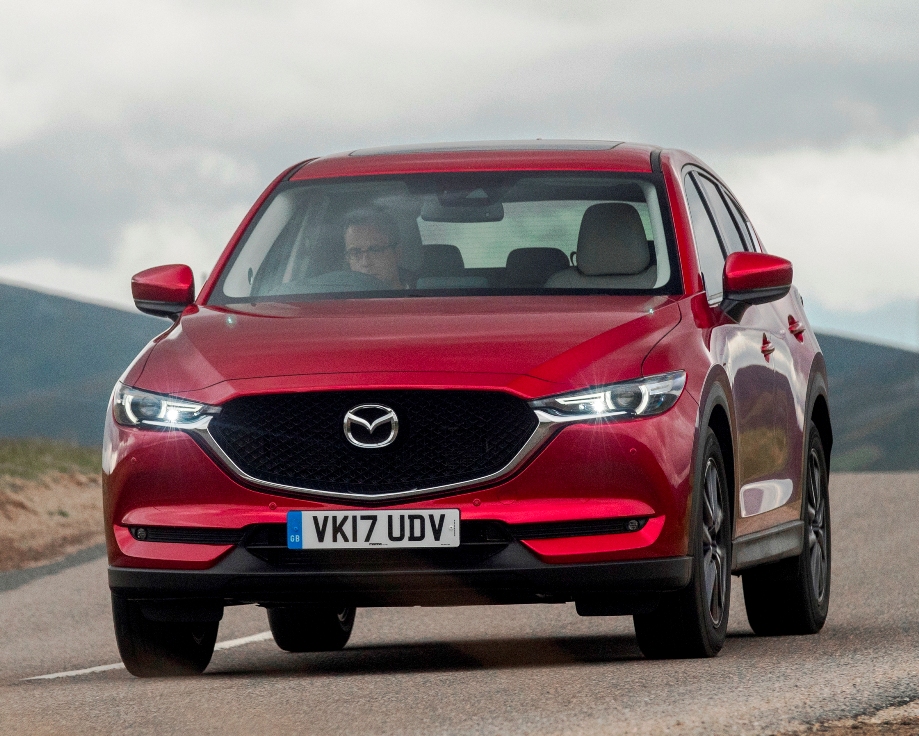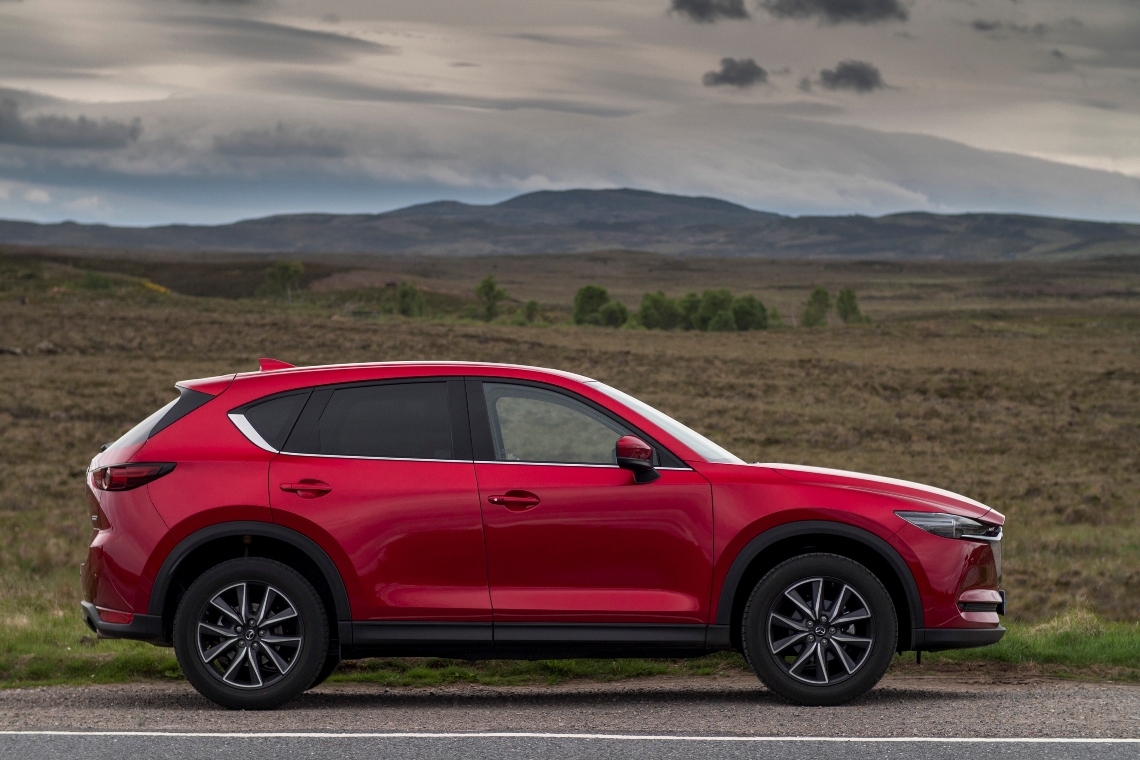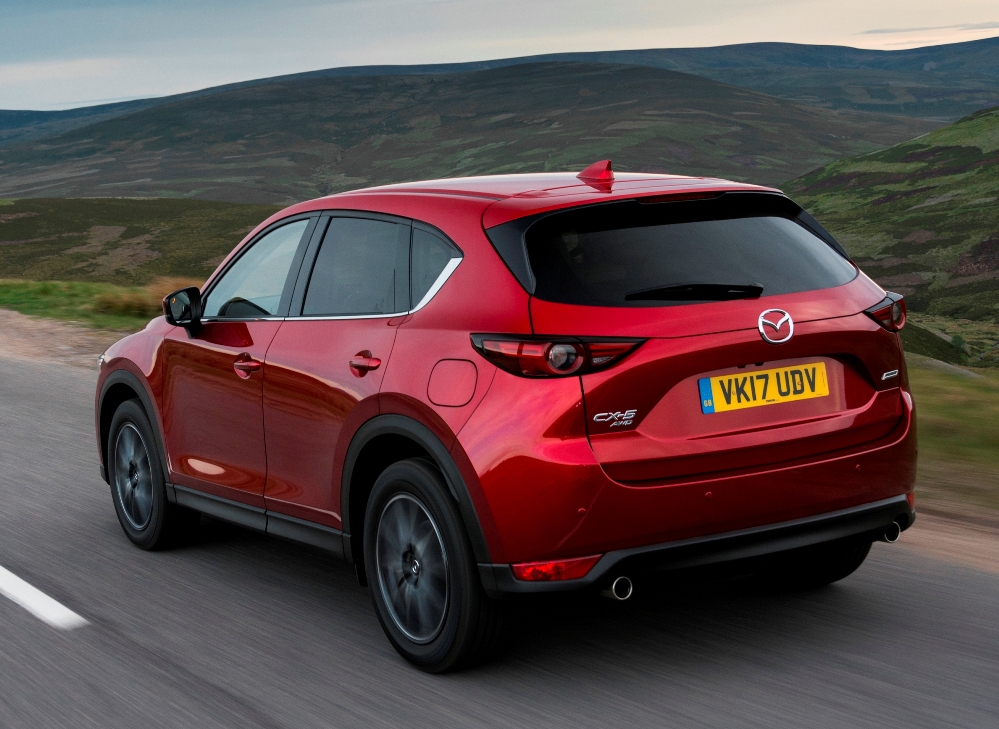 Mazda looks to the future – and CX-5 SUV brief test drive.
Mazda looks to the future – and CX-5 SUV brief test drive.
By Robin Roberts (and Miles Better News Agency).
What the Chancellor, in his Budget next week, has in store for diesel-powered vehicles is the subject of rumour and speculation to combat their so-called higher pollution than petrol models. But increases in VAT or VED road tax on new diesel cars bought from a date to be specified, or an overall increase in road tax for all diesel models and also a prohibitive price hike on the tax on diesel fuel are all possible, it appears.
But motoring life goes on and meeting the needs of future motoring and drivers requires a variety of solutions, say Mazda.
It will depend on the availability of power resources whether it is for petrol or diesel engines, hybrids, pure electric or hydrogen powered cars and other vehicles, according to Mazda UK PR director Graeme Fudge.
Mazda is three years away from its centenary, after starting by making cork products before moving into trike-bikes and launching its first car 50 years ago – and from the outset it sought to challenge convention to seize opportunities, he said.
This individual approach saw it pioneer the rotary engine and go on to be the only Japanese car maker to win the gruelling Le Mans 24 hrs race.
Mr. Fudge said the company had deliberately kept its global manufacturing footprint small when others had not, because it could better control products for particular markets and it relished good design and engineering, and had a strong social conscience.
Mazda is looking towards 2030 and what are likely to be the issues, needs and solutions it will provide, and it believes that while EVs offer the lowest well to wheel CO2, a steady improvement in reducing emissions from the internal combustion engine will bring them down to that of liquid natural gas. It believes that by 2030 the emissions will be half what they are today and two decades later they will be cut by 90% compared to current levels.
“By 2035 we still expect 80% of vehicles on the roads to be ICE (Internal Combustion Engines) so it makes sense to improve their efficiency and cut emissions of the ICEs, so any additional gains from adding electrification in some form will bring still further benefits,” he said.
“We don’t think there is a single answer to overcoming environmental issues and they require several approaches. We see it as a raft of solutions not one solution.”
In some countries with an extensive green power network it would be most appropriate for electric cars, while others with few charging points would benefit from hybrids or advanced ICEs and if hydrogen is widely available then this would be a better solution.
It is, for instance, working with Toyota in America to develop the next generation of hybrid vehicles while Mazda has come up with a highly sophisticated Spark Control Compression Ignition engine.
This uses an ultra weak fuel mixture which is ignited but then relies on compression to better distribute the burn so the overall benefit is lower fuel consumption, more complete combustion and lower emissions in its new generation Skyactive Plus engine range which will be coming to market in the near future.
Mazda has also developed a new generation of Skyactive platform which will underpin all its future models and is capable of being lengthened or widened as required for particular cars, making substantial savings on development and engineering.
Clothing the future models we will see a new design with minimum body creases but careful curving to create reflections and depth, as well as a distinctive appearance from any angle.
Mr. Fudge said Mazda UK sales are currently just behind where they were a year ago and he expects they will end the year in the same position. The decline in diesel sales has not affected Mazda very much as it has the latest Euro6 power units which are still a very good choice for towing and high mileage users, and are exempt from London’s Ultra Low Emission Zone penalties.
He said the company shares the concern of the Society of Motor Manufacturers and Traders over Brexit and wants to know the terms of the UK exit and implications for the automotive sector, but as a Japanese car maker it would not be affected in the same way as a British or European vehicle manufacturer.
Mazda CX-5 SUV First Impressions
 There was an opportunity to very briefly evaluate the refreshed Mazda CX-5 SUV with prices ranging from £23,695 up to £33,195.
There was an opportunity to very briefly evaluate the refreshed Mazda CX-5 SUV with prices ranging from £23,695 up to £33,195.
Their top SUV is offered in a comparatively small ten-car range, but it’s a very carefully placed model with a 2.0 litre 165 hp petrol engine and 2.2 litre 150 and 175 hp turbodiesels, with front wheel drive or intelligent four-wheel-drive, and essentially two trim levels with six-speed manual or automatic transmission.
This autumn it was refreshed with a range of styling and equipment packs including dedicated lifestyle accessories for the active buyers and those who tow.
Our 175 hp 2.2 AWD SportNav manual diesel immediately struck me with its stylish interior and its powertrain is not only very smooth but also lively and economical, returning 54.5 mpg over a mixture of main and side country roads just bettering the official Combined Cycle figure of 54.3 mpg. The CO2 emissions are 142 g/km so VED road tax is £200 First Year rate followed by the standard rate of £140. Company car drivers will pay 30% Benefit-in-Kind tax.
Mazda has always made good manual gearboxes and its ease of operation suggests an automatic would not offer much advantage for another £1,800, while its positive steering and good brakes instill confidence.
At a fiver short of £31,400 it’s not cheap but it does undercut many German rivals and comes with the cache of rarity.
I liked the comfort, room and refinement of the powertrain and chassis as well as the clarity of the instruments, including a head-up display, and secondary controls.
It pulled well, cruised quietly and had enough reserve to quickly and safely overtake on main roads, and it has good towing potential with a braked towing weight of 2,000 kg (4,409 lb). For good measure there is a large 506 litres (17.87 cu.t) boot with the three rear seats in use but with them folded this goes up to 1,620 litres (57.21 cu.ft).
VERDICT
With sharp but practical exterior styling, a roomy, well-equipped interior plus the option of petrol or diesel engines the latest CX-5 is a worthy competitor, but sometimes an under-mentioned one, in the ever growing SUV market.
For: Refreshed sharper exterior styling, enhanced specification, improved torsional rigidity, good real-life fuel economy.
Against: Top models are pricey, no seven-seat option, warranty is not over-generous, low profile in a crowded SUV market.
Milestones and Wheels-Alive in Brief:
Mazda CX-5 2.2D 175 hp, manual, 4WD SportNav SUV.
Price: £31,395.
Engine/transmission: 2.2 litre, four cylinder, turbodiesel, 175 hp, 420 Nm (310 lb.ft) of torque from 2,000rpm, six speed manual 4WD.
Performance: 126 mph, 0–62mph 8.8 seconds.
Fuel consumption: Combined Cycle 54.3 mpg (54.5 mpg on test).
Emissions and taxation: CO2 142 g/km, VED £200/£140, BiK company car tax 30%.
Insurance Group: 23E.
Warranty: Three years/60,000 miles.
Dimensions/capacities: L 4,550 mm (14.93 ft), W 1,840 mm (6.04 ft), H 1,680 mm (5.51 ft), boot/load area 506 to 1,620 litres (17.87 to 57.21 cu.ft), braked towing weight 2,000 kg (4,409 lb), five doors/five seats.
